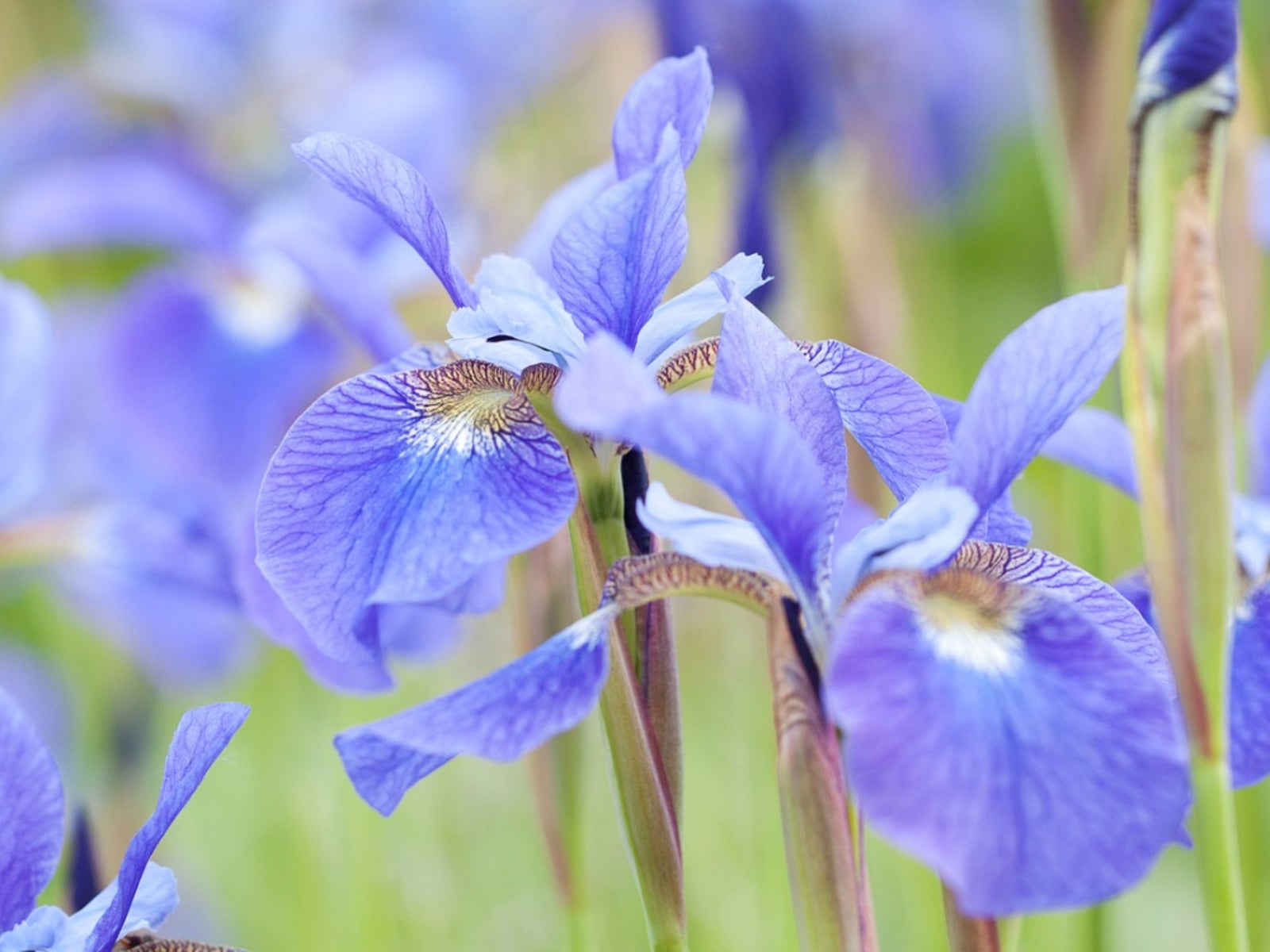Identifying Iris Borer Damage And Killing Iris Borers


The iris borer is the larvae of the Macronoctua onusta moth. Iris borer damage destroys the rhizomes from which the lovely iris grows. The larvae hatch in April to May when iris leaves are just emerging. The larvae enter the leaves and tunnel into the plant causing structural and cosmetic damage as they go. In addition to this damage, the larvae introduce a bacteria that causes a soft, foul smelling rot. Iris borer symptoms may mimic those of common iris diseases.
Iris Borers Symptoms
Iris borers may be hard to see at first but they grow to 2 inches (2.5 cm.) long and are pinkish grubs. Iris borers symptoms are first noticed in April or May as they tunnel into the leaves. The leaves become ragged and dark streaked. The leaves will also leak a fluid. These symptoms also mimic bacterial soft rot, leaf spot, and iris scorch, all common iris diseases. Iris borer damage escalates to include mushy, foul-smelling rhizomes and stems and affects the entire vigor of the plant.
Iris Borer Damage
The most damaging aspect of the borer's activities is the affect on the iris rhizomes. They make holes in them and the tunneling and feeding opens the structures up to other bacteria and fungus. Irises are perennials which rise from their rhizomes every year. When the rhizomes are destroyed there are no storage structures to promote leaf and flower growth and the plant dies out. The bacteria the iris borer introduces will cause the rhizomes to rot from the inside out and produce a smelly fluid. The rhizome is destroyed and should be dug out to prevent the spread of the bacteria. Iris borer damage can effectively kill off an old established iris plot in one season.
Iris Borer Control
The moth responsible for these juvenile insects is rarely seen as it is a nocturnal creature. It lays eggs in fall which overwinter and hatch in spring. Iris borer control may start with planting strains that are resistant to the insects, such as Siberian iris. Good sanitation and a watchful eye can spot the signs of the borers and remove the leaves as they are moving in to the plant. Old leaves, flowers, and stems need to be removed in fall to remove the eggs that will overwinter and start the problem anew the following season. Killing iris borers requires a well timed insecticide application. Spinosad is a safe spray that is a bio-insecticide. It should be applied when the iris growth is just 6 to 8 inches (15-20 cm.) high in early spring. A repeat iris borer treatment in ten to fourteen days will help ensure that the pests have been eradicated. Another effective way of killing iris borers is with nematodes. Beneficial nematodes can be purchased in late winter or early spring in most garden centers. Nematodes are released during the rainy season. They are a safe and effective iris borer treatment which also works against many other garden pests.
Gardening tips, videos, info and more delivered right to your inbox!
Sign up for the Gardening Know How newsletter today and receive a free copy of our e-book "How to Grow Delicious Tomatoes".

Bonnie Grant is a professional landscaper with a Certification in Urban Gardening. She has been gardening and writing for 15 years. A former professional chef, she has a passion for edible landscaping.
-
 Looking For Plants To Give You The Soft And Fuzzies? Try These 5 Fuzzy Leaf Plant Options
Looking For Plants To Give You The Soft And Fuzzies? Try These 5 Fuzzy Leaf Plant OptionsLovers of texture, drama, silver foliage and tactile plants will adore these special sensory garden additions. These fuzzy leaf plant options will leave you all aglow
By Susan Albert
-
 Get Ready For A Summer Of Hummers! Grow These Full Sun Hummingbird Plants and Flowers
Get Ready For A Summer Of Hummers! Grow These Full Sun Hummingbird Plants and FlowersIf you’re lucky enough to enjoy a sunny backyard, make sure you are maxing out on your pollinator opportunities and grow these full sun hummingbird plants and flowers
By Tonya Barnett